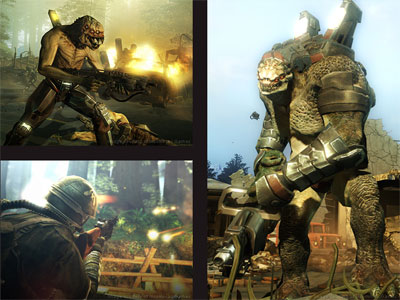Link via CGSociety
“This was such a huge item,” explains Sharit. “What we basically started with was the rough models. We’d seen some black and white forms, some silhouettes of the creatures. These were really very rough models, set up on a very rough rig. This was passed onto animation to get an idea of how it would work in the game play. The roughs were all done in Maya. To get our normal maps we did a high resolution model in ZBrush. We were doing a lot of texturing with the models in ZBrush and then baking all that information out when we did our normal maps. From there, once it worked in the game, we could begin to form the monster and make sure it then fitted onto the skeleton. This is actually pretty standard fare workflow in creating the models for games.”
Using Maya, Insomniac artists were able to perform quick sketches of buildings, environments, models, and other elements that enabled verification of realistic proportions compared to the huge creature, all before fully programming the enemy. Maya has always been a big part of Insomniac’s building pipeline. They build environments, characters and animations within the app. On Resistance 2, however, they used Maya more for visualization than on other games. They visualized in Maya with a custom shader, and used the system to figure out physics calculations. For huge, complicated objects, they calculated in Maya, which was then translated into the game. That way, there’s more action on screen.
ZBrush 3.1 is available at an academic discount price of $390.

Leave a Reply